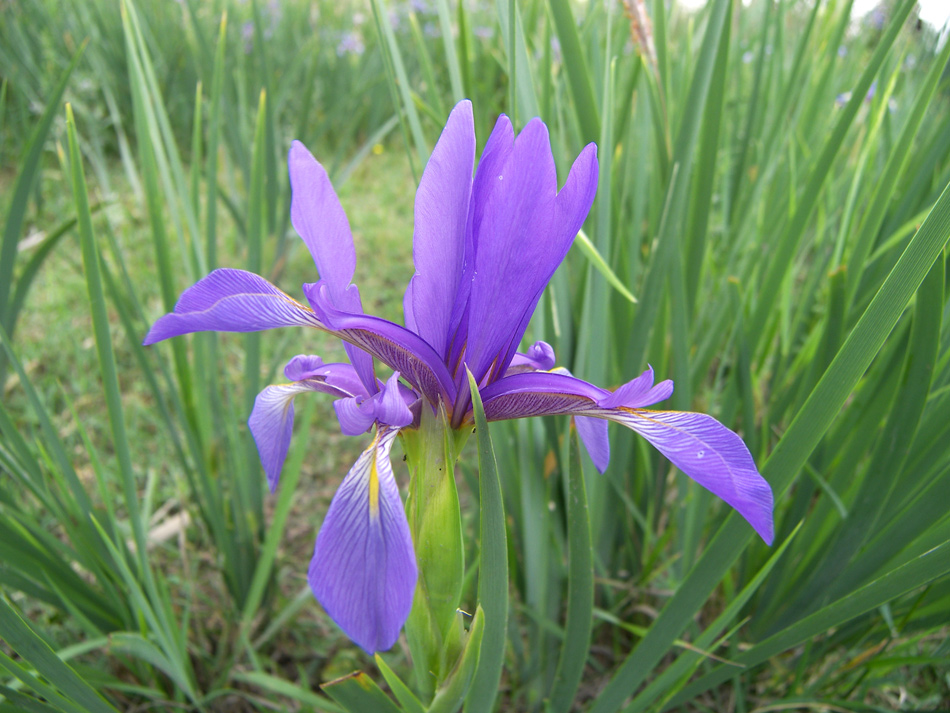Iris musulmanica: Red Data Book of Armenia

EN B 1 ab(i,ii,iii,iv,v) + 2 ab(i,ii,iii,iv,v)
Category. Endangered species. The extent of occurrence is less than 5000 km2, the area of occupancy is less than 500 km2. The species grows in the area of intensive agricultural activity. It was included in the first edition of the Red Data Book of Armenia under Category 1: Endangered species. It is not included in the Annexes of CITES and that of the Bern Convention.
Description. Rhizomatous perennial herb. Stem 40–90 cm. Leaves narrowly linear, shorter than stem. Flowers 4–5, light blue, pale blue or rarely whitish. Highly ornamental plant.
Distribution. In Armenia it is distributed in Yerevan (surroundings of Mkhchyan, Zangibasar, Reanlu, Masis, Ararat, Surenavan villages) and Aparan (Arayiler) floristic regions. EOO is 810 km2, AOO is 20 km2, the number of locations is 4. Besides Armenia the species grows in Nakhichevan, East Anatolia and North–West Iran.
Ecological, biological and phytocoenological peculiarities. Grows in lower and middle mountain belts, at the altitudes of 700–1500 meters above sea level, in salt marshes, in moist saline meadows, along the banks of irrigation channels. Flowering from May to July, fruiting from July to August.
Limiting factors. Loss/degradation of habitats caused by drainage of marshes and tillage, as well as intensive collection for sale.
Conservation actions. Part of the population grows in the area of "Salt marsh" nature monument. Necessary: raise of the SPA’s status, and real conservation of the Ararat Plain Salt marshes, monitoring of the population state, as well as to introduction into floriculture.
Suggestions
 The Ministry of Environment sent a letter international partners to draw their attention to the real danger of environmental disasters as a result of Azerbaijan's large-scale aggression towards the territory of Armenia
The Ministry of Environment sent a letter international partners to draw their attention to the real danger of environmental disasters as a result of Azerbaijan's large-scale aggression towards the territory of Armenia
 Vicia pisiformis: Red Data Book of Armenia
Vicia pisiformis: Red Data Book of Armenia
 Vavilovia formosa: Red Data Book of Armenia
Vavilovia formosa: Red Data Book of Armenia
 Trigonella capitata: Red Data Book of Armenia
Trigonella capitata: Red Data Book of Armenia
 Trigonella astroides: Red Data Book of Armenia
Trigonella astroides: Red Data Book of Armenia












